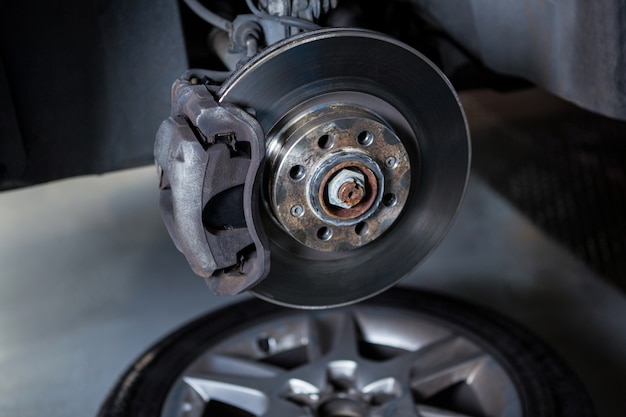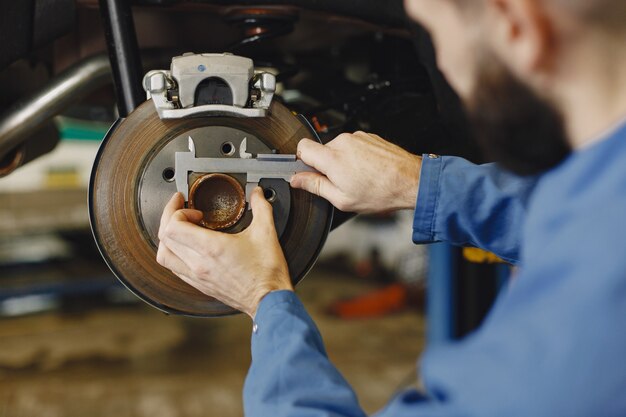Precision In Motion: Mastering Metalwork With The Ultimate Press Brake Guide
In the dynamic world of metal fabrication, where precision is the cornerstone of excellence, the press brake emerges as the unsung hero, embodying the essence of precision in motion. This comprehensive guide embarks on a journey through the intricate realm of mastering metalwork with the Ultimate Press Brake Guide. As an indispensable tool in the hands of skilled artisans, the press brake transforms raw sheet metal into intricate components with unparalleled accuracy. From the nuanced tonnage considerations to the intricacies of precision tooling and the finesse of CNC control, this guide unveils the secrets that elevate metalworking to an art form, where every bend and angle is a testament to the seamless fusion of craftsmanship and cutting-edge technology.
At the heart of this exploration lies the understanding that precision is not merely a goal but a philosophy that permeates every facet of the metalworking process. Whether it's selecting the right tooling, fine-tuning CNC-controlled movements, or implementing rigorous quality control measures, precision becomes the guiding force that transforms metal into meticulously crafted masterpieces. Join us as we delve into the world of Precision in Motion, where the Ultimate Press Brake Guide serves as the compass, navigating the intricate terrain of metal fabrication with finesse and expertise.
Understanding the Press Brake
The Heart of Precision
At the core of precision metal bending lies the press brake. This versatile machine applies force to a workpiece, typically sheet metal, to form predetermined bends and shapes. The precision of a press brake is determined by various factors, including the machine's tonnage, length, and control systems.

Tonnage Matters
One of the key considerations when working with a press brake is the tonnage, which refers to the force the machine can exert. Higher tonnage press brakes can handle thicker and more robust materials, providing versatility in metalworking projects. Understanding the tonnage required for a specific job is crucial to achieving precise results.
Length and Flexibility
The length of a press brake is another critical factor influencing precision. Longer machines offer greater bending capacities, enabling the fabrication of larger and more intricate components. Additionally, the flexibility of the press brake's back gauge system enhances precision by facilitating accurate positioning of the workpiece.
Mastering the Art of Precision
- Press Brake Expertise: Develop a profound understanding of press brakes, considering factors like tonnage and length for optimal results in metal bending.
- Precision Tool Selection: Choose precision tooling carefully, matching punches and dies to specific applications to achieve the desired shapes with finesse.
- CNC Precision Control: Utilize Computer Numerical Control (CNC) systems to fine-tune and control press brake movements, ensuring accuracy and repeatability in bending processes.
- Setup Prowess: Master the art of meticulous setup, configuring press brakes and selecting suitable tooling, laying the groundwork for precision in every bend.
- Programming Proficiency: Hone programming skills for CNC systems to execute intricate bending sequences with minimal room for error, enhancing overall precision.
- Material Insight: Acquire knowledge about different metal properties such as thickness and elasticity, tailoring the bending process accordingly for consistent precision.
- Quality Control Mastery: Implement stringent quality control measures, regularly assessing press brake calibration, tooling conditions, and final product dimensions for consistent precision.
- Commitment to Consistency: Embrace a commitment to consistent setup, programming, and quality control as the key pillars for mastering the art of precision in metalwork.
Types of Press Brakes
Hydraulic Press Brakes:
Hydraulic press brakes use hydraulic power for precise sheet metal bending. Versatile and efficient, they offer consistent force, making them crucial for accurate and repeatable bending operations. With user-friendly controls and the ability to handle diverse materials, hydraulic press brakes are essential for achieving precision in metal forming.
CNC Press Brakes:
CNC press brakes, powered by computer numerical control, revolutionize metal bending with automated and programmable precision. These machines excel in accuracy, allowing for efficient and consistent bending sequences. Ideal for complex and intricate designs, CNC press brakes enhance productivity by eliminating manual errors and ensuring reliable results in sheet metal fabrication.
Mechanical Press Brakes:
Mechanical press brakes rely on mechanical power for rapid sheet metal bending. Known for high-speed operations, they are suitable for heavy-duty applications, ensuring swift and efficient production. These machines excel in handling large volumes and are characterized by their robust design and quick response, making them a preferred choice for industries requiring speed and strength in metal bending processes.
Servo-Electric Press Brakes:
Servo-electric press brakes utilize electric motors with servo control for precise and energy-efficient sheet metal bending. This technology ensures enhanced accuracy, reduced maintenance, and improved control over the bending process. Servo-electric press brakes are ideal for applications demanding high precision and efficiency, offering a modern and sustainable solution in metal fabrication.
Pneumatic Press Brakes:
Pneumatic press brakes operate using air pressure for sheet metal bending. Cost-effective and suitable for lighter materials, they are known for rapid tooling changes and versatility in various applications. Pneumatic press brakes offer a practical solution for projects requiring swift adjustments and flexibility in metal forming processes.
Achieving Consistency and Accuracy

The Importance of Setup and Programming
Precision in motion begins with meticulous setup and programming. Properly configuring the press brake, selecting the appropriate tooling, and programming the CNC system are essential steps for achieving consistency and accuracy in metal bending. This phase demands a deep understanding of the materials being used and the intricacies of the desired final product.
Material Considerations
Different metals behave in distinct ways when subjected to bending forces. Understanding the material properties is crucial for achieving precision in metalwork. Factors such as thickness, elasticity, and hardness must be considered during the setup and programming phase to ensure the press brake exerts the right amount of force for precise bends.
Quality Control Measures
In the pursuit of precision, quality control measures are indispensable. Regular checks of the press brake's calibration, tooling condition, and dimensional accuracy of finished products help maintain consistent quality. Implementing a robust quality control process safeguards against deviations and ensures that each metalwork piece meets the required specifications.
Pneumatic Press Brakes:
Pneumatic press brakes operate using air pressure for sheet metal bending. Cost-effective and suitable for lighter materials, they are known for rapid tooling changes and versatility in various applications. Pneumatic press brakes offer a practical solution for projects requiring swift adjustments and flexibility in metal forming processes.
20 Fowler Rd, Dandenong South VIC 3175, Australia
Phone: 613-9794-6675

